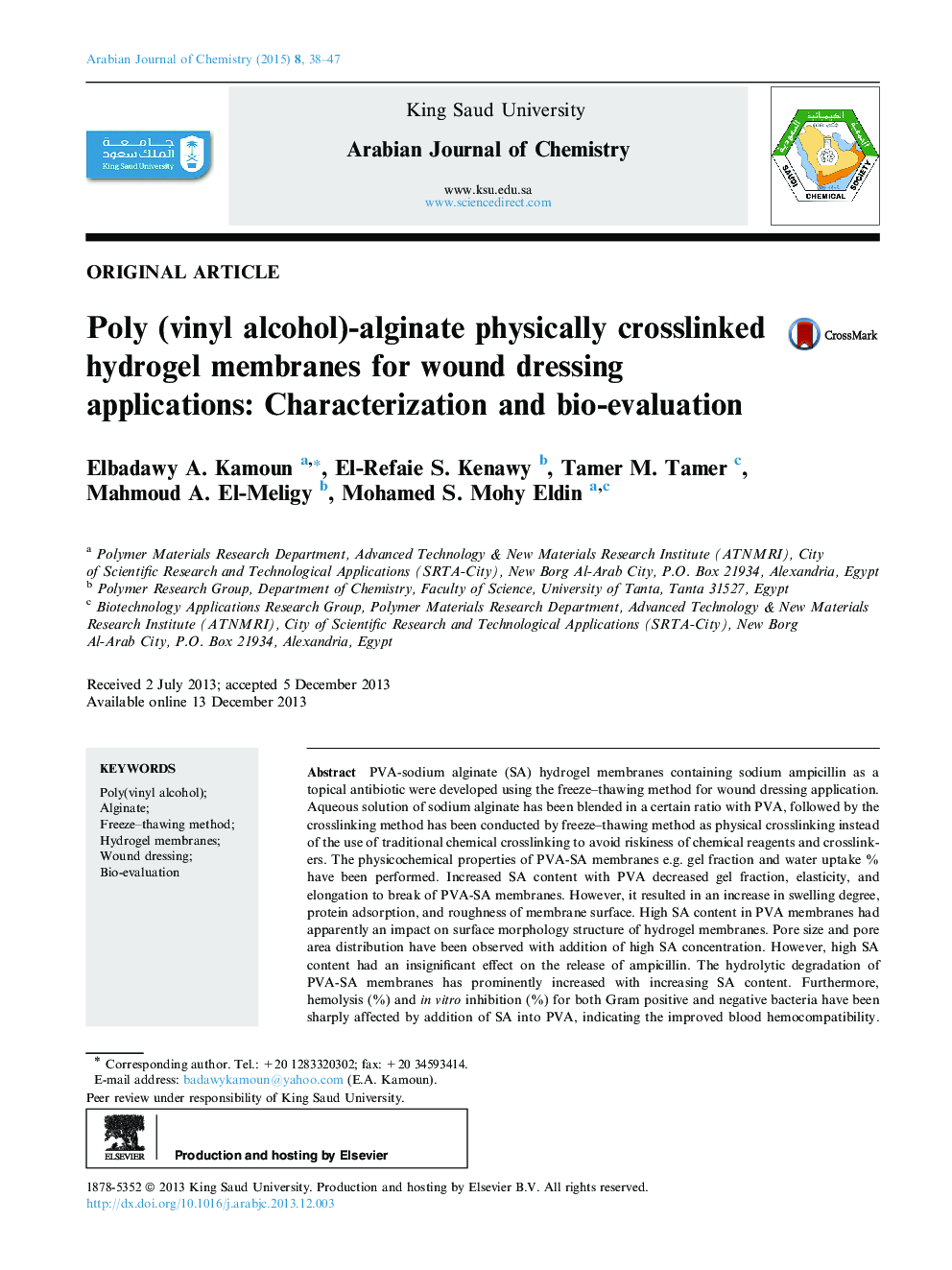| Article ID | Journal | Published Year | Pages | File Type |
|---|---|---|---|---|
| 1251340 | Arabian Journal of Chemistry | 2015 | 10 Pages |
PVA-sodium alginate (SA) hydrogel membranes containing sodium ampicillin as a topical antibiotic were developed using the freeze–thawing method for wound dressing application. Aqueous solution of sodium alginate has been blended in a certain ratio with PVA, followed by the crosslinking method has been conducted by freeze–thawing method as physical crosslinking instead of the use of traditional chemical crosslinking to avoid riskiness of chemical reagents and crosslinkers. The physicochemical properties of PVA-SA membranes e.g. gel fraction and water uptake % have been performed. Increased SA content with PVA decreased gel fraction, elasticity, and elongation to break of PVA-SA membranes. However, it resulted in an increase in swelling degree, protein adsorption, and roughness of membrane surface. High SA content in PVA membranes had apparently an impact on surface morphology structure of hydrogel membranes. Pore size and pore area distribution have been observed with addition of high SA concentration. However, high SA content had an insignificant effect on the release of ampicillin. The hydrolytic degradation of PVA-SA membranes has prominently increased with increasing SA content. Furthermore, hemolysis (%) and in vitro inhibition (%) for both Gram positive and negative bacteria have been sharply affected by addition of SA into PVA, indicating the improved blood hemocompatibility. Thus, PVA-SA hydrogel membrane based wound dressing system containing ampicillin could be a good polymeric membrane candidate in wound care.
